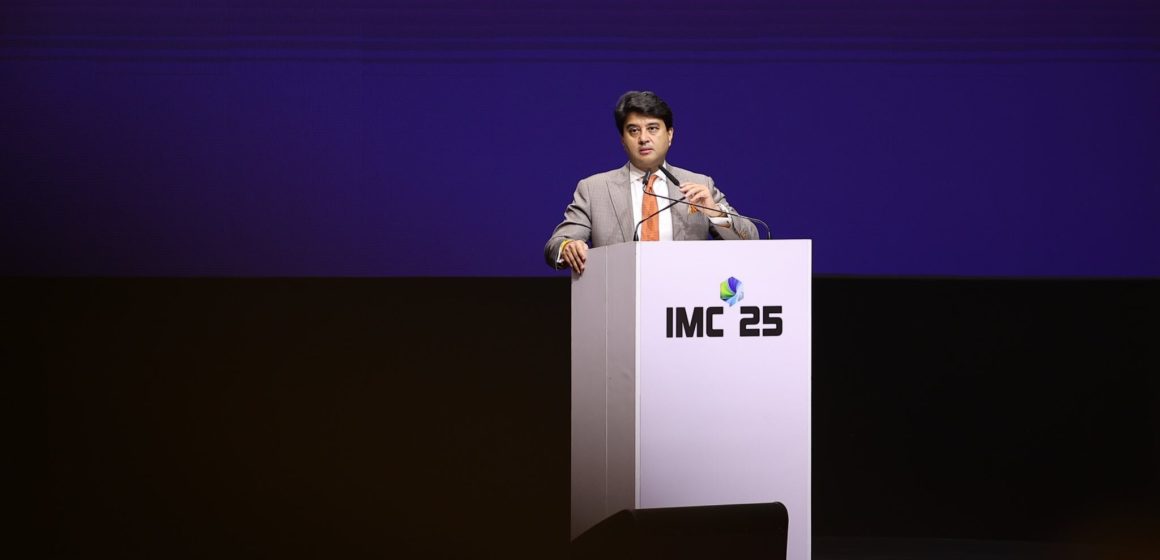The minister added that India’s emerging digitally skilled workforce, backed by a robust framework of security and sovereignty, is poised to drive the telecom revolution and shape a Viksit Bharat.
India’s telecommunications sector has reached a pivotal moment, unlocking opportunities for global stakeholders to design and manufacture in India for the world, Union Minister for Communications Jyotiraditya Scindia said at the inaugural session of the Indian Mobile Congress (IMC) 2025 on Wednesday.
Echoing the event’s theme, ‘Innovate to Transform’, Scindia said, “The true signature of ‘innovate to transform’ is powered by what I call the DSS revolution: ‘D’ for designing in India, ‘S’ for solving for India, and ‘S’ for scaling from India.”
To illustrate this, he cited Prime Minister Narendra Modi’s emphasis on domestic innovation, which recently led to the rollout of 100,000 4G towers built on India’s indigenous technology stack.
“It is built in India, built for India, but [also] built for the world. We have now entered the club of four nations, and India has planted its foot firmly in the area of product innovation,” Scindia said.
He added that India is now seeking to replicate this success in semiconductors through aatmanirbhata (self-reliance), likening the chip to the charkha (spinning wheel), a symbol of swadeshi during the freedom movement.
“From the charkha that wove freedom for India to the chip that powers transformation for India, India has shown that swadeshi innovation can have a global impact.”
Scindia noted that this focus on indigenous innovation is also reshaping domestic manufacturing. Under the Prime Minister’s Production Linked Incentive (PLI) scheme, the sector has seen nearly ₹910 billion in new production, ₹180 billion in exports, and the creation of 30,000 new jobs in telecoms. He said this shift towards a product-driven economy would help carry Indian crafts into the global electronics ecosystem.
Emerging Digitally Skilled Workforce
Scindia pointed out that the developing skilled workforce will play a critical role in future transformations. Beyond achieving the fastest rollout of 5G technology, the nation is now aiming for 10 per cent of global patents in 6G through the Bharat 6G Alliance. Similarly, opportunities are emerging in satellite communications, with the market expected to triple from $4 billion to $15 billion.
“India will have the world’s largest digitally skilled workforce in the days to come. And protected by our strong framework of security and sovereignty, this workforce will power not only the telecom revolution but also the evolution of a Viksit Bharat (developed India). Skills empower us, security gives us confidence, and sovereignty makes us self-reliant.”
Reinforcing his central message, Scindia urged global participants to embrace India’s manufacturing ecosystem, not merely as a destination, but as a launchpad for innovation.
“Design here, solve here, and scale from here,” he said. “Because when India builds, the world transforms.”
-Manish Pant


